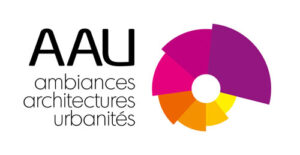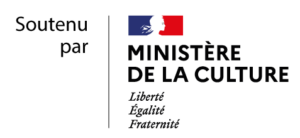Christophe Bittolo, Psychologist, psychoanalyst, group analyst, associate research lecturer (LPCP of the University of Paris Descartes), France
Although ambience is an issue raised primarily in architectural research, it is quite interesting to explore the place this issue currently occupies in clinical psychology. This discipline traditionally focused its attention on what occurs inwardly in a singular subject; yet the extension of fields of application to group practices (patients, family, working teams) has led clinicians and psychoanalysts to develop group-based concepts and methodologies.
In this movement, the attention paid to affective life has expanded towards a shared, binding sensoriality, “irrelevant” in some respects, towards a “borderline” area, where the boundaries the mind creates between one’s surroundings, psyche and body become blurred and less relevant.
This is where ambience intervenes and takes on its full value as a process. The presence of this overall sentiment is as much an indicator of a collective body’s sensory-affective state as it is the generator of effects on how people think, act and behave together. The pregnance and impact of ambiences in hospitals has led us to study closely their evolution and workings. (C. Bittolo, 2007, 2008). What questions are raised today by allowing for this sentiment in the group diagnosis method?
While the quality of an ambience (friendly, tense, loose, etc.) can help us recognize the power it has over intra-psychological and intra-subjective processes, its absence relative to a given moment raises the question of the different forms that, in the life of a group, converge to regulate a diffuse sensoriality. So we were able to show that some group dynamics, tonico-postural and motor styles and “disjunctive” processes had the power to contain and regulate the forces at work. From this angle, a clearly pregnant ambience would signal a deregulation or excess of these various integrative forms.
Among these forms, the role of the form taken by a group raises questions about its power of esthesic capacity; how do the aesthetic of a form and the emotion it arouses contribute to the transformation of a broader sensoriality? This question addresses the attractor power of the ambience and the importance of rhythms.Finally, on a more general note, ambience leads us to rethink the scope of psychic life and subconscious phenomena, beyond the “topics” initially conceptualized by S. Freud, and the links that exist between the internal architecture of psychic life and sensitive space. A vast area of research lies before us, to which ambience offers a valuable key.
Bibliography
Anzieu D.,1999, Le groupe et l’Inconscient, Paris, Dunod, 3rd Ed.
Bittolo C., 2008, “Les ambiances et leur traitement dans les groupes en institution” in Revue de Psychothérapie Psychanalytique de Groupe, 50, 2008, p45-53
Bittolo C., 2007, “Introduction à la psychopathologie des ambiances”, in E. Lecourt et al., Modernité du groupe dans la clinique psychanalytique, Toulouse, Erès
Bion W.R.,1961, Recherches sur les petits groupes, tr. E.L. Herbert, Paris, Puf, 1965
Lewin K.,1947, “La frontière dans la dynamique des groups” in Psychologie dynamique, Paris, Puf, 1959
Rouchy J.C.,1998, Le groupe, espace analytique, clinique et théorie, Toulouse, Erès
Thibault E., 2010, La géométrie des émotions, les esthétiques scientifiques de l’architecture en France, 1860-1950, Wavre, ed. Mardaga
1. Taught in the context of the Master’s in Clinical Psychology & Psychopathology of the University of Paris Descartes
2. This means specifying the notion of “form” from the filiations taken from Gestaltism, communication theories and other psychoanalytical theories on how groups function.
3. See Estelle Thibault’s work on this question (2010).



